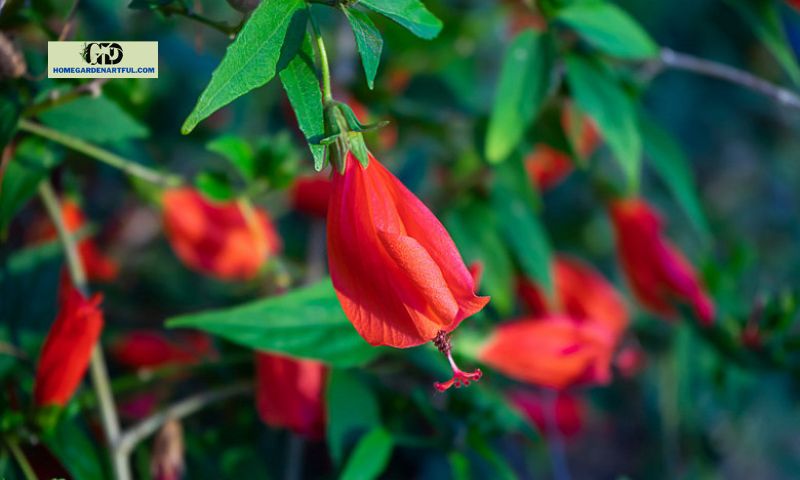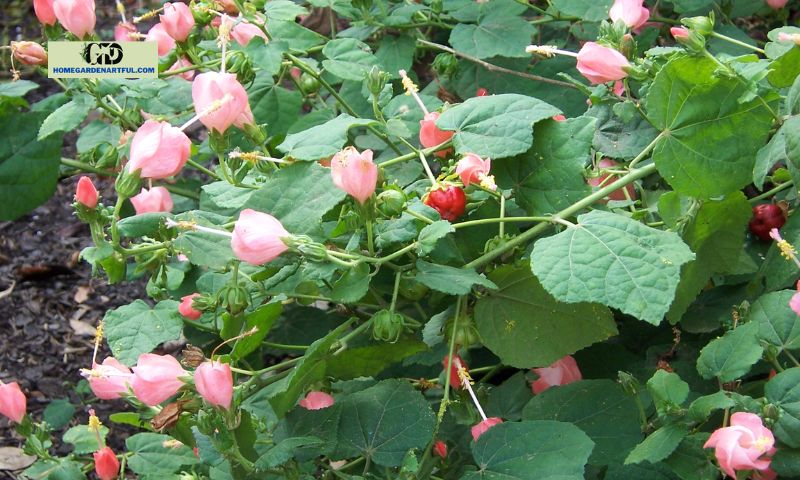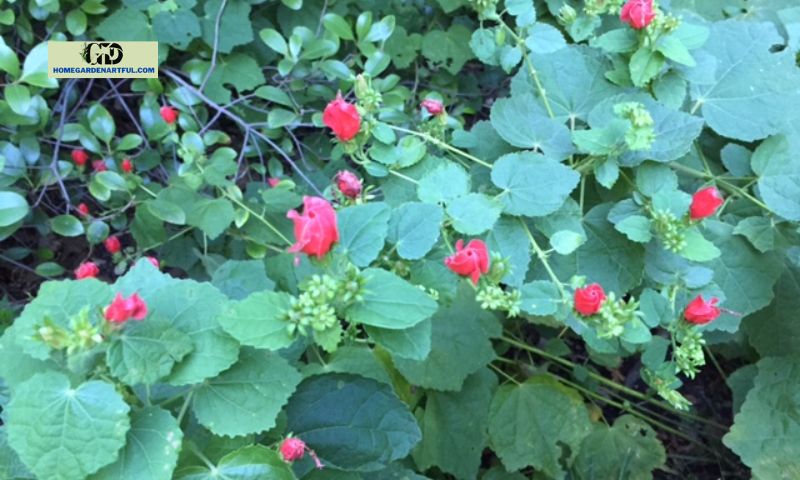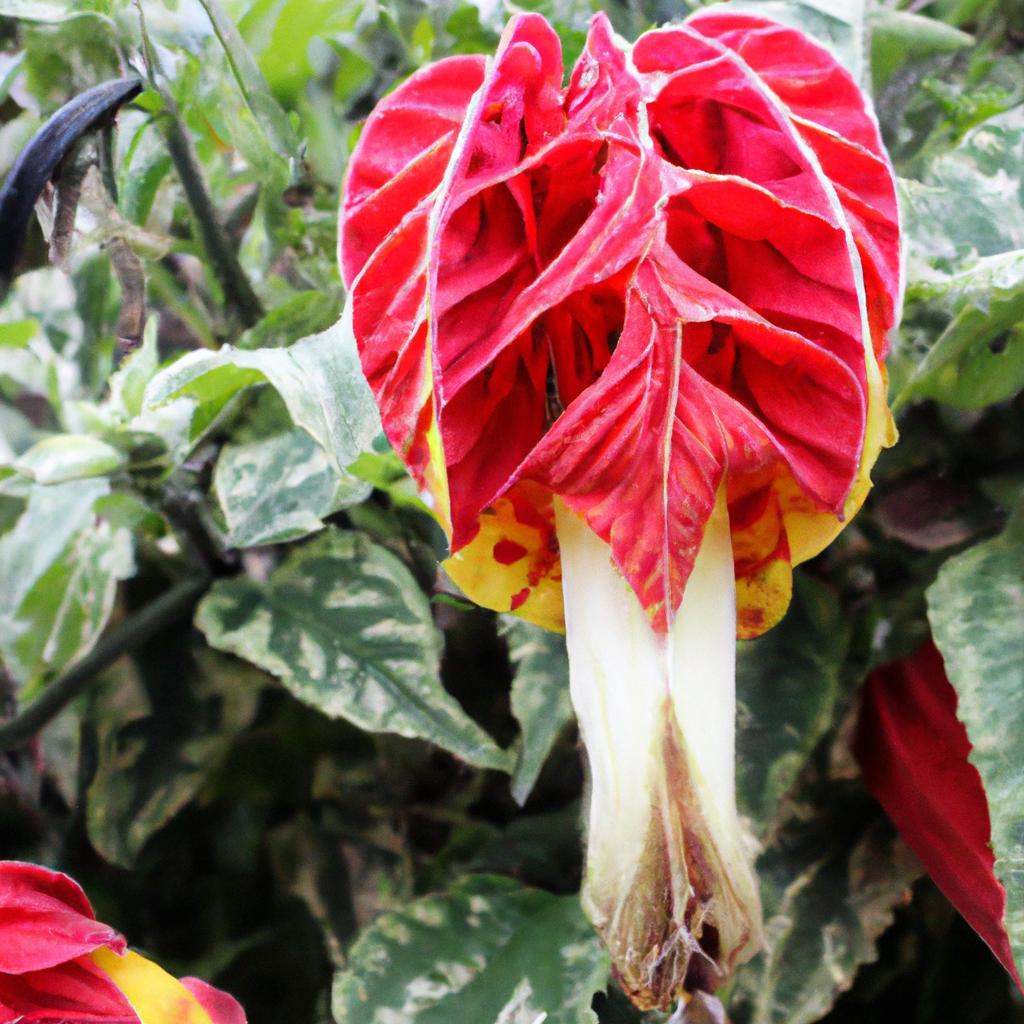Discover the beauty and benefits of the turk’s cap plant. Explore its medicinal properties, ornamental value, and ability to attract wildlife. A must-have for any garden!
Introduction
Are you looking to add a touch of elegance and charm to your garden? Look no further than the Turk’s Cap Plant. With its vibrant blooms and unique shape, this plant is a true showstopper. In this article, homegardenartful.com will introduce you to the captivating world of the Turk’s Cap Plant, exploring its characteristics, cultivation techniques, benefits, and care tips. Let’s dive in!
The Turk’s Cap Plant, scientifically known as Malvaviscus arboreus, is a native to the southern regions of the United States and parts of Mexico. It belongs to the Malvaceae family, which includes hibiscus and mallows. This perennial shrub can reach a height of up to 6 feet and is characterized by its striking red, tubular flowers that curl back, resembling a Turkish turban. Don’t be fooled by its name, as the Turk’s Cap Plant is not limited to just red blooms. Varieties with pink, white, and even yellow flowers are also available, allowing you to create a colorful oasis in your garden.
The Turk’s Cap Plant has been cherished by gardeners for centuries due to its versatility and aesthetic appeal. Apart from its stunning appearance, this plant is also adored for attracting hummingbirds and butterflies, adding a touch of life and movement to your outdoor space. Whether you have a small balcony garden or a sprawling backyard, the Turk’s Cap Plant can be easily incorporated into any landscape design, adding a touch of whimsy and natural beauty to your surroundings.
Stay tuned for the upcoming sections, where I will delve deeper into the characteristics of the Turk’s Cap Plant, provide insights into its cultivation and propagation, discuss its numerous benefits and uses, and offer valuable tips on how to care for this captivating plant. Let’s embark on this horticultural journey together and uncover the enchantment of the Turk’s Cap Plant.
Continue reading:
Characteristics of the Turk’s Cap Plant

A. Description of the Plant’s Appearance
When it comes to visual appeal, the Turk’s Cap Plant stands in a league of its own. The star attraction of this plant is undoubtedly its unique flowers, which resemble a small turban, hence the name “Turk’s Cap.” These exquisite blooms consist of five petals fused together to form a tubular shape. The petals curl back, revealing a cluster of vibrant stamens at the center, creating a visually striking display. While the classic color is a deep, rich red, you can also find cultivars with pink, white, or yellow flowers, allowing you to personalize your garden palette.
But the beauty of the Turk’s Cap Plant isn’t limited to its flowers alone. The plant also boasts glossy, dark green leaves that serve as an excellent backdrop for the colorful blooms. The leaves are heart-shaped with serrated edges, adding a touch of elegance to the overall appearance. The combination of the lush foliage and the eye-catching flowers creates a captivating contrast that is bound to draw attention and admiration from all who encounter it.
B. Growth Habits and Preferred Environmental Conditions
The Turk’s Cap Plant thrives in warm and humid climates, making it ideal for gardens in the southern regions of the United States and similar regions. It is a hardy perennial that can withstand a wide range of conditions, including both full sun and partial shade. However, it tends to produce more flowers when planted in areas that receive ample sunlight.
In terms of growth habits, the Turk’s Cap Plant is known for its ability to spread. It forms dense clumps and can grow up to 6 feet in height, making it a wonderful choice for filling in empty spaces or creating borders in your garden. Additionally, this plant is highly adaptable and can thrive in various soil types, including clay, loam, and sandy soil. Just ensure that the soil is well-draining to prevent waterlogging, which can lead to root rot.
Now that we’ve explored the captivating appearance and growth habits of the Turk’s Cap Plant, let’s move on to the next section, where we will delve into the cultivation and propagation tips for this extraordinary plant.
Continue reading:
Section III: Cultivation and Propagation of the Turk’s Cap Plant

A. Soil requirements and preparation
To ensure the optimal growth and health of your Turk’s Cap Plant, it is crucial to provide it with the right soil conditions. This plant thrives in well-draining soil that is rich in organic matter. Prior to planting, prepare the soil by incorporating compost or well-rotted manure to improve its fertility and drainage capabilities. This will create a nutrient-rich environment for your Turk’s Cap Plant to flourish.
B. Planting techniques and considerations
When it comes to planting the Turk’s Cap Plant, timing and spacing are key factors to consider. It is best to plant this perennial shrub in the spring or fall when the temperatures are mild. Before planting, dig a hole that is twice the width and depth of the plant’s root ball. Gently remove the plant from its container and place it in the hole, ensuring that the top of the root ball is level with the soil surface. Backfill the hole with soil, firming it gently around the plant to eliminate air pockets.
When spacing multiple Turk’s Cap Plants, consider their mature size and allow adequate room for them to spread. A spacing of 2 to 3 feet between plants is generally recommended. This will allow each plant to receive sufficient sunlight and air circulation, promoting healthy growth and minimizing the risk of diseases.
C. Watering and maintenance tips for healthy growth
Proper watering is essential for the Turk’s Cap Plant, especially during its establishment phase. Water the plant deeply and thoroughly, allowing the soil to dry slightly between waterings. Once established, the Turk’s Cap Plant is moderately drought-tolerant and can withstand short periods of dryness. However, it is important to monitor the soil moisture levels, especially during prolonged dry spells, and provide supplemental irrigation if needed.
Regular maintenance practices such as pruning and fertilizing will help keep your Turk’s Cap Plant in top shape. Prune the plant in late winter or early spring to remove any dead or damaged branches and to shape it as desired. Applying a balanced fertilizer in the spring and summer will provide the necessary nutrients for robust growth and profuse blooming.
With these cultivation and propagation tips in mind, you are well on your way to successfully growing and nurturing your own Turk’s Cap Plant. Let’s move on to the next section, where we will explore the various benefits and uses of this remarkable plant.
Continue reading:
Common Issues and How to Care for the Turk’s Cap Plant

A. Pests and Diseases to be Aware of
Like any other plant, the Turk’s Cap Plant is susceptible to certain pests and diseases. It’s essential to be aware of these potential issues so you can take timely action to protect your beloved plant. One common pest that affects the Turk’s Cap Plant is aphids. These tiny insects can infest the leaves and stems, sucking the sap and causing damage. To combat aphids, you can try using insecticidal soaps or neem oil, which are effective and environmentally friendly solutions. Another pest to watch out for is the spider mite, which can cause webbing and yellowing leaves. Regularly inspect the undersides of the leaves and use a strong stream of water or insecticidal soap to control their population.
B. Effective Pest Control and Prevention Methods
Prevention is key when it comes to keeping your Turk’s Cap Plant healthy and pest-free. One effective preventive measure is to maintain good garden hygiene by regularly removing fallen leaves and debris, which can harbor pests and diseases. Additionally, providing adequate spacing between plants allows for better air circulation, reducing the risk of fungal infections. If you notice any signs of pests or diseases, such as wilting leaves or unusual spots, act promptly to prevent further spread. Remember, early intervention is crucial in minimizing damage and ensuring the long-term health of your Turk’s Cap Plant.
C. Pruning and Shaping for Optimal Growth
Pruning is an essential aspect of caring for the Turk’s Cap Plant. Regular pruning not only helps maintain its shape but also promotes optimal growth and flowering. Prune your Turk’s Cap Plant in late winter or early spring before new growth begins. Remove any dead or damaged branches, as well as any overcrowded or crossing branches. This will improve airflow and sunlight penetration, reducing the risk of fungal diseases. Additionally, you can shape your Turk’s Cap Plant by selectively pruning to encourage a bushier form or a more compact size. Remember to use clean and sharp pruning tools to make clean cuts and minimize the risk of infection.
By staying vigilant against pests and diseases, implementing effective pest control and prevention methods, and providing proper pruning and shaping, you can ensure that your Turk’s Cap Plant thrives and continues to be a stunning addition to your garden.
Continue reading:
Conclusion
In conclusion, the Turk’s Cap Plant is a captivating addition to any garden or landscape. Its striking red, tubular flowers and unique shape make it a true standout. Not only does it bring beauty and elegance to your outdoor space, but it also offers a range of benefits and uses.
Firstly, the Turk’s Cap Plant has been valued for its medicinal properties and traditional uses. Its leaves and flowers have been utilized in herbal remedies for various ailments, such as sore throat, digestive issues, and skin irritations. Incorporating this plant into your garden not only adds visual appeal but also provides access to natural remedies.
Secondly, the ornamental value of the Turk’s Cap Plant cannot be overstated. Its vibrant blooms and lush green foliage create a stunning focal point in any garden. Whether used as a border plant, in containers, or as part of a mixed flower bed, the Turk’s Cap Plant adds a touch of charm and sophistication to your outdoor space.
Lastly, this plant serves as a magnet for wildlife and pollinators. The nectar-rich flowers attract hummingbirds, butterflies, and bees, bringing your garden to life with their vibrant colors and graceful movements. By incorporating the Turk’s Cap Plant in your garden, you are creating a haven for these important pollinators, contributing to the overall health and biodiversity of your ecosystem.
In conclusion, the Turk’s Cap Plant is a versatile and enchanting addition to any garden or landscape. Its beauty, medicinal properties, ornamental value, and ability to attract wildlife and pollinators make it a must-have for gardening enthusiasts. So why not embrace the natural allure of the Turk’s Cap Plant and create a stunning sanctuary in your own backyard?
Thank you for joining me on this journey to explore the wonders of the Turk’s Cap Plant. To learn more about gardening tips, plant care, and design inspiration, visit homegardenArtful.com for a wealth of resources and ideas. Happy gardening!
Continue reading:


